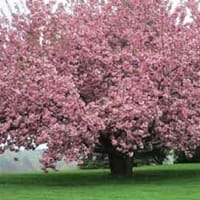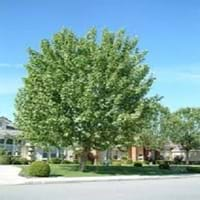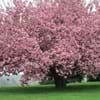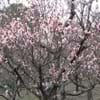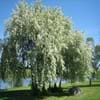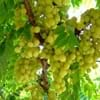Life Span
Annual and Perennial
Perennial
Type
Flowering Plants, Fruit, Tree
Tree
Origin
Hybrid origin
California
Types
Not Available
American Sycamore, Arizona Sycamore
Number of Varieties
Not Available
Habitat
Bushlands, gardens, Homesteads, In desert grasslands, Lowland, Shady Edge, Tropical areas
Floodplains, River side, Stream side
USDA Hardiness Zone
5-8
3-8
AHS Heat Zone
Not Available
8-5
Sunset Zone
Not Available
4, 5, 6, 7, 8, 9, 10, 11, 12, 13, 14, 15, 16, 18, 20, 21, 22, 23, 24
Habit
Oval or Rounded
Upright/Erect
Flower Color
White, Pink
Yellow
Flower Color Modifier
Bicolor
Bicolor
Fruit Color
Not Available
Sandy Brown
Leaf Color in Spring
Green
Light Green
Leaf Color in Summer
Dark Green
Light Green
Leaf Color in Fall
Not Available
Sandy Brown
Leaf Color in Winter
Not Available
Not Available
Plant Season
Spring, Fall
Not Available
Sunlight
Not Available
Full Sun, Partial Sun
Type of Soil
Clay, Loam
Clay, Loam, Sand
The pH of Soil
Acidic, Neutral, Alkaline
Acidic, Neutral
Soil Drainage
Average
Average
Bloom Time
Summer, Late Summer, Early Fall
Not Available
Tolerances
Not Available
Wet Site, Drought
Where to Plant?
Ground
Ground
How to Plant?
Seedlings, Stem Cutting
Seedlings, Stem Planting, Transplanting
Plant Maintenance
Medium
Medium
Watering Requirements
Keep the ground moist but not water-logged, Requires watering in the growing season
Keep the ground moist but not water-logged, Never Over-water
In Summer
Lots of watering
Lots of watering
In Spring
Moderate
Moderate
In Winter
Average Water
Average Water
Soil pH
Acidic, Neutral, Alkaline
Acidic, Neutral
Soil Type
Clay, Loam
Clay, Loam, Sand
Soil Drainage Capacity
Average
Average
Sun Exposure
Full Sun, Partial Sun
Full Sun, Partial Sun
Pruning
Prune prior to new growth, Remove deadheads, Shape and thin as needed
Prune in the late winter or spring, Remove damaged leaves, Remove dead leaves, Remove hanging branches, Remove short branches, Remove short twigs
Fertilizers
Organic Manure
All-Purpose Liquid Fertilizer
Pests and Diseases
Aphids, Mealy bugs, Mites
Red blotch
Plant Tolerance
Not Available
Drought
Flowers
Showy
Insignificant
Flower Petal Number
Semi-Double
Not Available
Foliage Texture
Medium
Coarse
Foliage Sheen
Matte
Matte
Attracts
Not Available
Not Available
Allergy
no allergic reactions
Asthma, Eye irritation, Skin irritation
Aesthetic Uses
Ornamental use, Showy Purposes
Beautification, Landscape Designing, Showy Purposes
Beauty Benefits
Not Available
Not Available
Environmental Uses
Air purification
Air purification
Medicinal Uses
No Medicinal Use
Cold, Cough, Dysentry, Pain killer
Part of Plant Used
Flowers, Fruits
Fruits
Other Uses
Culinary use, Showy Purposes, Used as Ornamental plant
Decoration Purposes, Showy Purposes, Used as Ornamental plant
Used As Indoor Plant
No
No
Used As Outdoor Plant
Yes
Yes
Garden Design
Feature Plant, Shade Trees, Street Trees
Shade Trees
Botanical Name
PRUNUS 'Hally Jolivette'
PLATANUS racemosa
Common Name
Flowering Cherry, Hally Jolivette Flowering Cherry
California Sycamore
In Hindi
चेरी
कैलिफोर्निया गूलर
In German
Blühende Kirsch
California sycamore
In French
cerisier
californie sycomore
In Spanish
floración de la cereza
california sicómoro
In Greek
Άνθιση κερασιών
Καλιφόρνια συκομουριά
In Portuguese
cereja de florescência
califórnia sicômoro
In Polish
Kwitnienie wiśni
california jawor
In Latin
florentem cerasis
california sycomoros
Phylum
Tracheophyta
Magnoliophyta
Class
Magnoliopsida
Magnoliopsida
Family
Rosaceae
Platanaceae
Clade
Angiosperms, Eudicots, Rosids
Angiosperms, Eudicots
Tribe
Not Available
Not Available
Subfamily
Amygdaloideae
Not Available
Importance of Flowering Cherry and California Sycamore
Want to have the most appropriate plant for your garden? You might want to know the importance of Flowering Cherry and California Sycamore. Basically, these two plants vary in many aspects. Compare Flowering Cherry and California Sycamore as they differ in many characteristics such as their life, care, benefits, facts, etc. Every gardener must at least have the slightest clue about the plants he wants to plant in his garden. Compare their benefits, which differ in many ways like facts and uses. The medicinal use of Flowering Cherry is No Medicinal Use whereas of California Sycamore is Cold, Cough, Dysentry and Pain killer. Flowering Cherry has beauty benefits as follows: Not Available while California Sycamore has beauty benefits as follows: Not Available.
Compare Facts of Flowering Cherry vs California Sycamore
How to choose the best garden plant for your garden depending upon its facts? Here garden plant comparison will help you to solve this query. Compare the facts of Flowering Cherry vs California Sycamore and know which one to choose. As garden plants have benefits and other uses, allergy is also a major drawback of plants for some people. Allergic reactions of Flowering Cherry are no allergic reactions whereas of California Sycamore have Asthma, Eye irritation and Skin irritation respectively. Having a fruit bearing plant in your garden can be a plus point of your garden. Flowering Cherry has no showy fruits and California Sycamore has no showy fruits. Also Flowering Cherry is not flowering and California Sycamore is not flowering . You can compare Flowering Cherry and California Sycamore facts and facts of other plants too.
